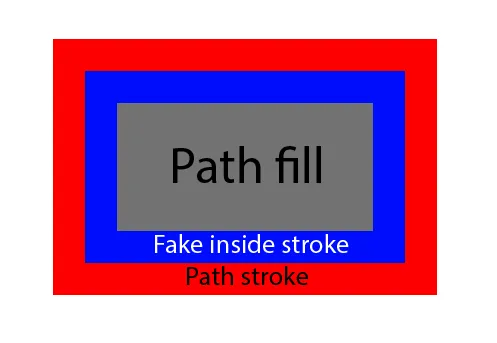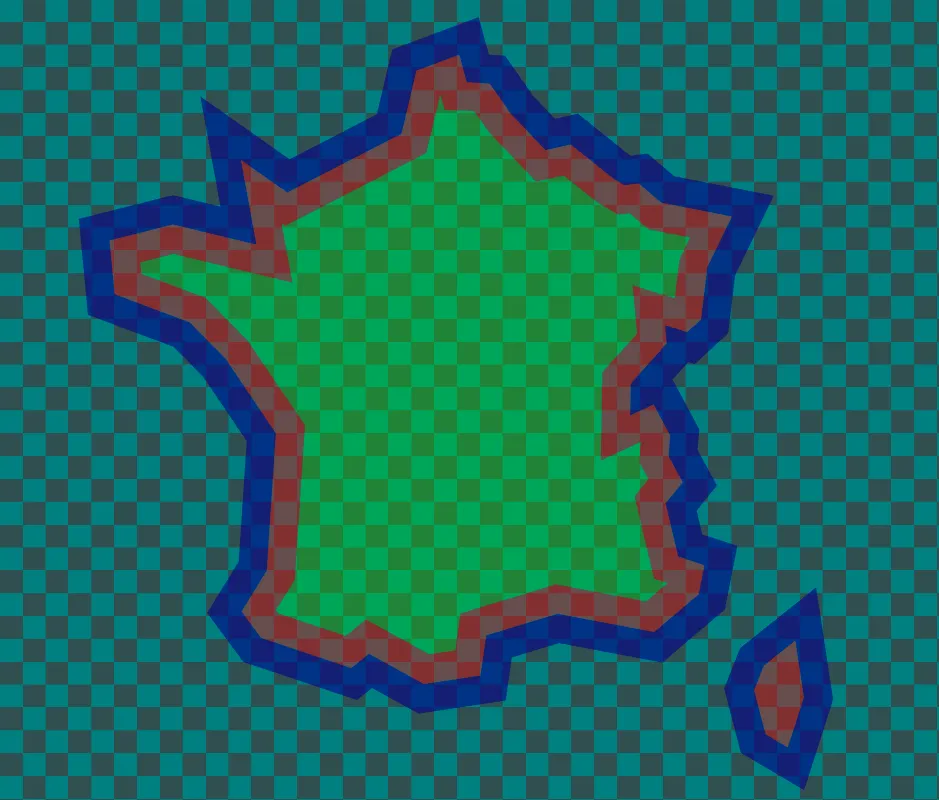我希望在SVG路径上模拟“内描边”。
我有一个SVG地图,其中包含多个复杂路径(国家),每个路径都有不同的填充颜色和描边。
我想在第一个路径中添加一个“虚假的内描边”。
我使用内阴影技巧(高斯模糊滤镜)完成了一些工作,但无法使其“非模糊”。
理想的解决方案是作为SVG过滤器,因此我可以通过JS动态应用它,而无需更改路径或操作DOM。
非常感谢! 编辑 1: 到目前为止,我尝试了这个技巧,但是假阴影有时会覆盖在描边上,而且总是模糊的,所以我不确定这是最好的方法...
<svg xmlns="http://www.w3.org/2000/svg" xmlns:xlink="http://www.w3.org/1999/xlink" width="150" height="150" style="transform:scale(2);transform-origin:0 0 ">
<defs>
<filter id='inset' x='-50%' y='-50%' width='200%' height='200%'>
<feFlood fill-color="black"/>
<feComposite in2="SourceAlpha" operator="out"/>
<feGaussianBlur stdDeviation='10' edgeMode="none" />
<feOffset dx='0' dy='0' result='offsetblur'/>
<feFlood flood-color='#00ff00' result='color'/>
<feComposite in2='offsetblur' operator='in'/>
<feComposite in2='SourceAlpha' operator='in' />
<feMerge>
<feMergeNode in='SourceGraphic'/>
<feMergeNode/>
</feMerge>
</filter>
</defs>
<path class="st0" d="M144.7,126.2l-2.8,8.8l-3.9-2.3l-2-7.7l1.7-4.3l5.5-4.4L144.7,126.2z M93.5,24.2l6,6.3l4.4-1l7.5,6l1.9,1.1
l2.5-0.3l4,3.4l12.3,2.4l-4.3,8.9l-1.1,9.1l-2.4,2.2l-3.9-1.2l0.3,3.2l-6.3,7l-0.1,5.6l4.1-1.9l2.9,5.4L121,84l2.5,4.6l-3,3.7
l2.2,9.3l4.6,1.5l-1,5.1l-7.8,6.6l-16.9-3.2l-12.5,3.8l-1,7l-9.9,1.5l-9.6-5.3l-3.1,2.5l-15.8-5.3l-3.4-4.6l4.4-7.1l1.6-24.1
l-8.8-13l-6.3-6.4l-13.1-4.9l-0.9-9.4l11.1-2.8L48.9,47l-2.7-14.8l8.1,5.7l20-10.3l2.6-11l7.5-2.8l1.3,4.8l4,0.2L93.5,24.2z" stroke-width="1" fill="#00ffff" stroke="#FF0000" filter="url(#inset)"/>
</svg>

